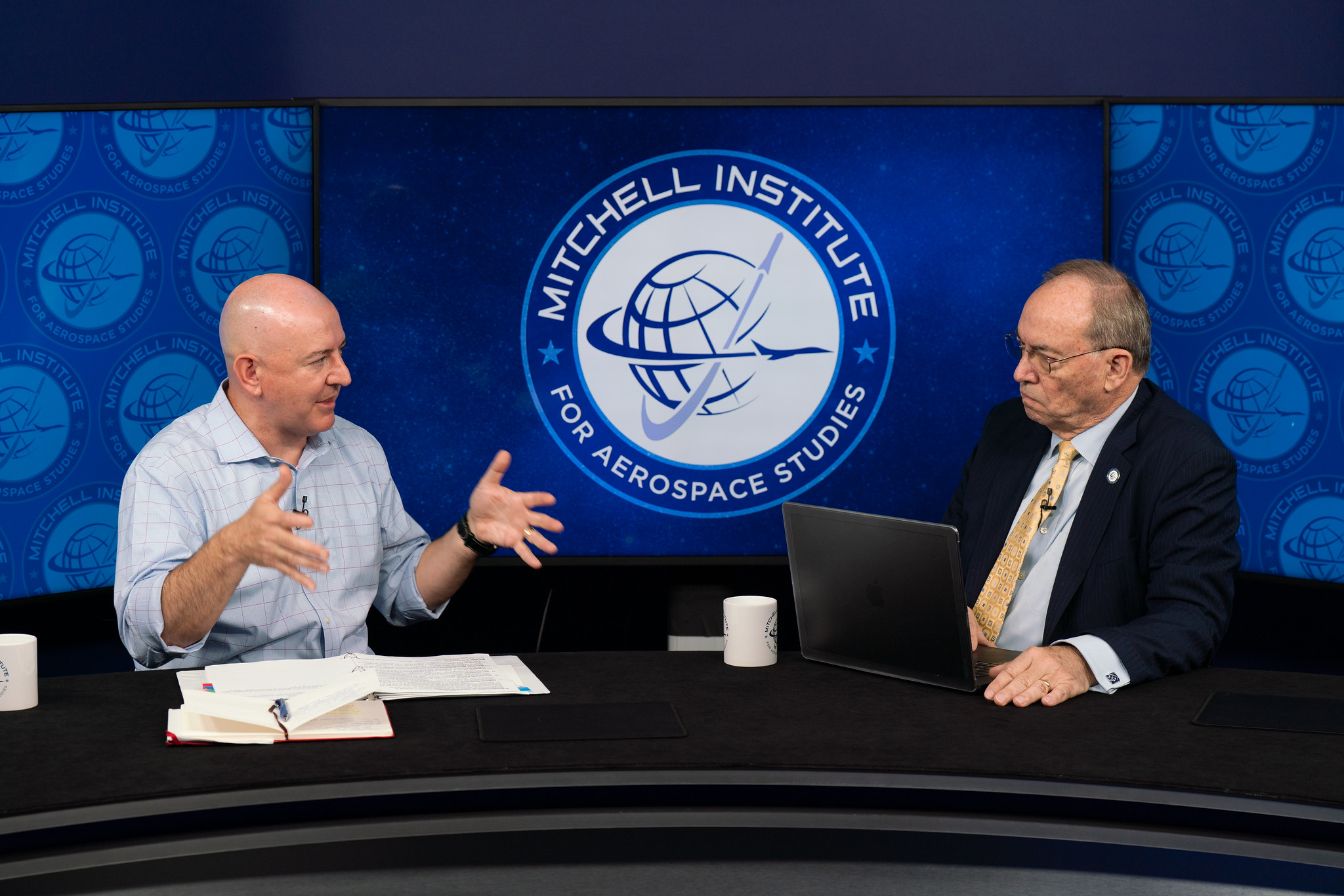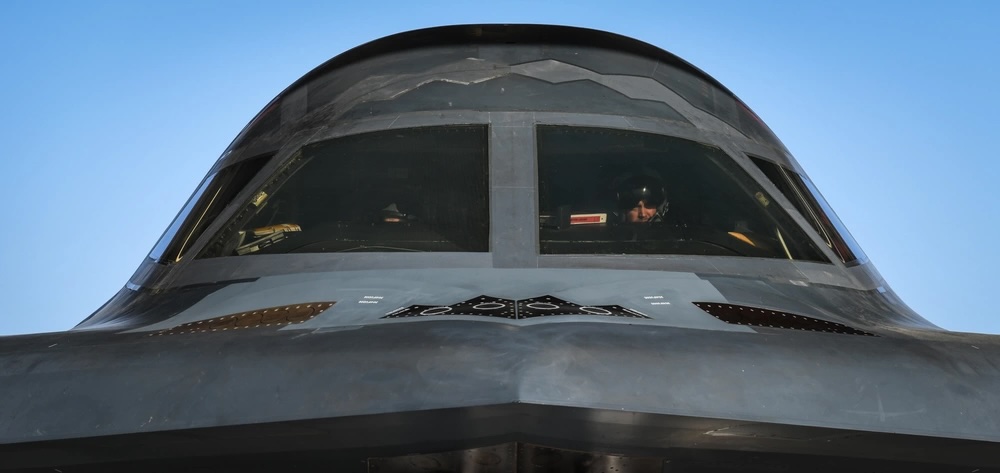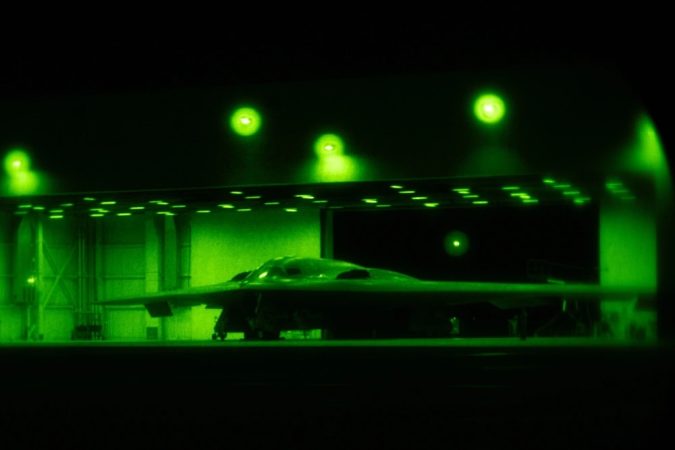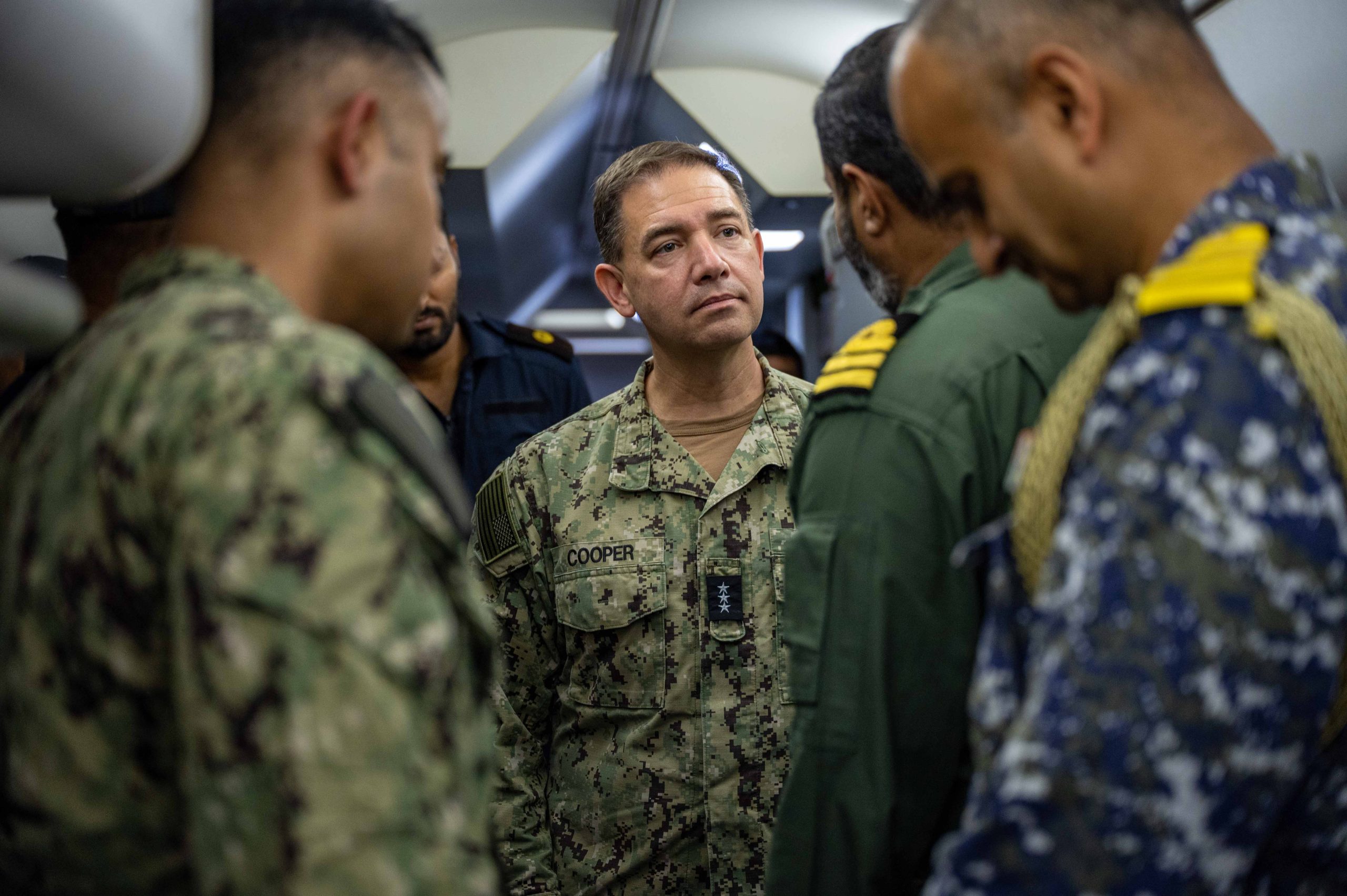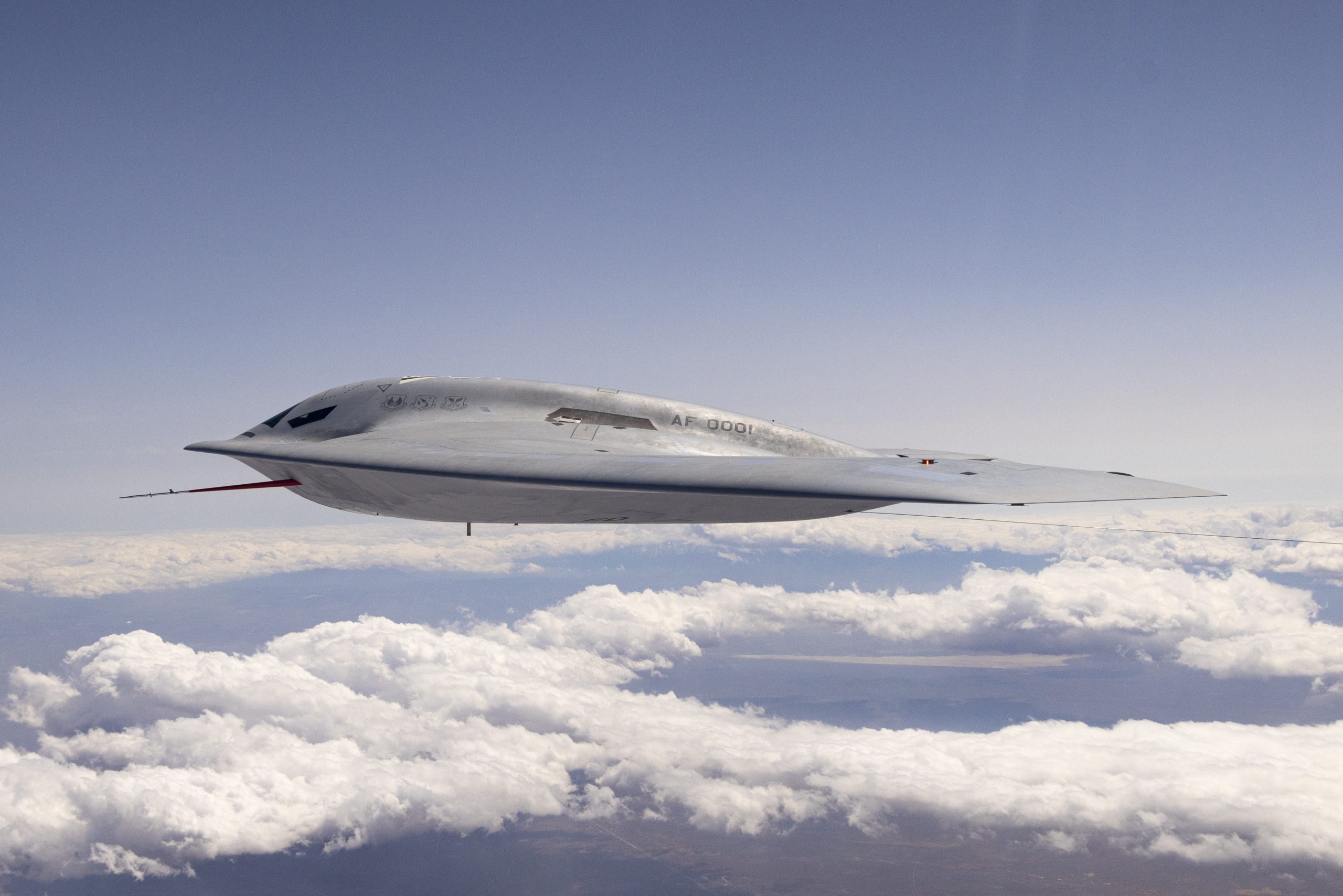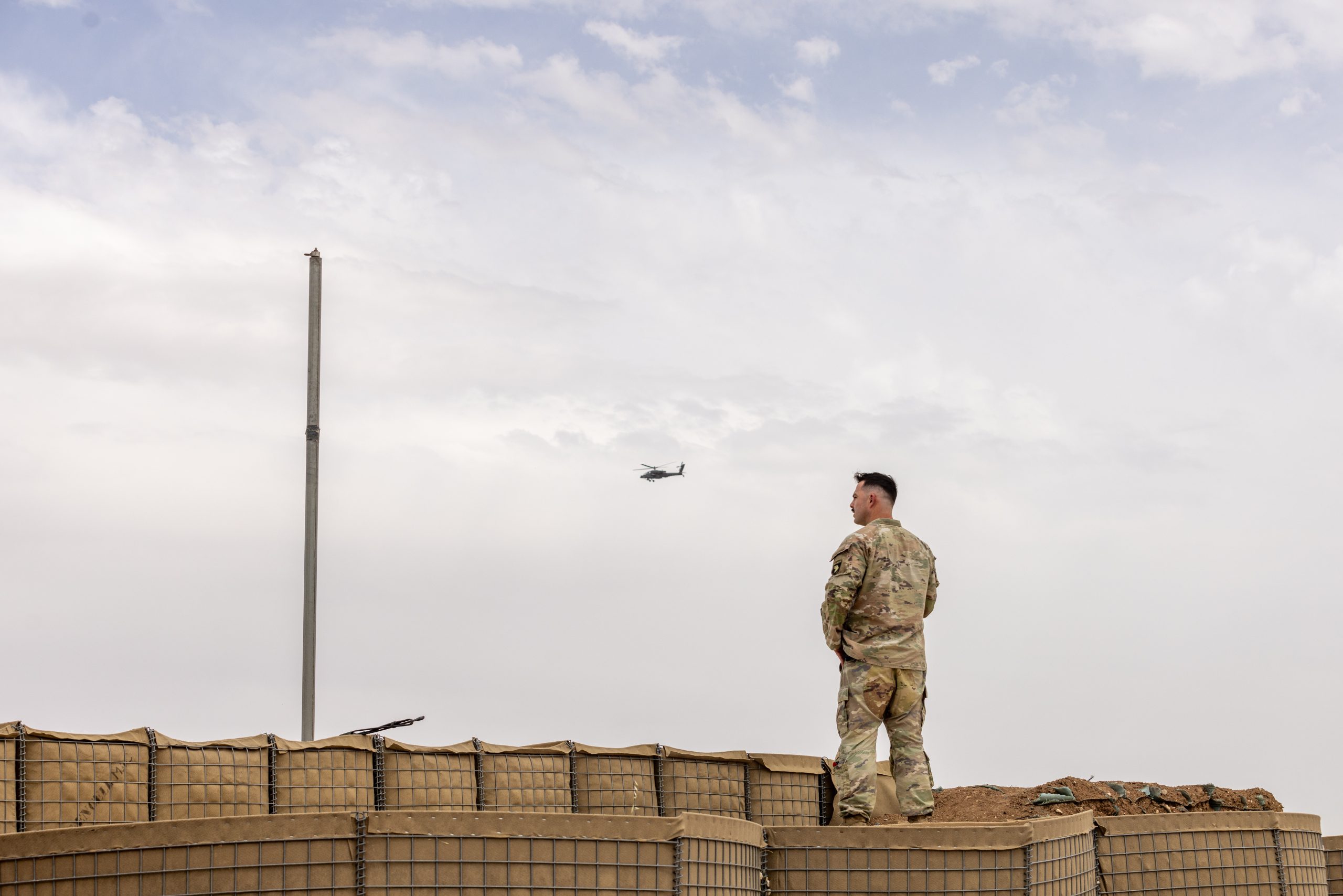The rise of quantum sensing is could someday overcome the advantages of stealth aircraft, making them easier to identify and increasing the need for speed, self-defense measures and other means of evading an enemy, the Defense Advanced Research Projects Agency’s No. 2 official said.
The “stealth era” may be coming to a close as future sensors emerge, Rob McHenry said on a webinar hosted June 25 by the Air and Space Forces Association’s Mitchell Institute for Aerospace Studies.
“I don’t think we’re going to be able to hide, in an operational sense, in a realistic way,” McHenry said, “due to the sophistication of sensor fusion and track, using AI and other techniques.”
How soon that will happen is still anyone’s guess, as quantum remains an attractive but elusive technology. McHenry’s comments come as the Air Force continues to invest in new stealth technologies and platforms intended to evade increasingly sophisticated air defenses. These include the B-21 bomber, now in testing, the future F-47 fighter, and new hunter-killer drones. In addition, some stealth attributes could eventually be given to larger, slower jets, like tankers and transport planes as a self-protection measure.
Retired Lt. Gen. David Deptula, dean of AFA’s Mitchell Institute for Aerospace Studies, said the need for stealth remains vital. “Stealth increases the probability of penetration, and decreases the probability of intercept of the stealthy aircraft,” Deptula said. “What Mr. McHenry raises is that those probabilities may be changing—but the fact is that they will continue to exist.”
Deptula said a modern stealth aircraft operates with “an associated set of other mission assets that employ real-time effects using advanced electronic warfare, cyber, space effects, and kinetics.” It is in combination wiith these that stealth is most effective.
“Add that up and factor in the dynamic variables of combat and it’s quite formidable,” he said. “Detection is but one element of a series of actions that must be taken to defend against stealth. After detection, the low-observable target must be tracked, the track must be transferred to an interceptor, then to a weapon, then to a fuse, and the fuse must be properly designed for the target. Each one of these elements in the kill chain are complicated by stealth, which decreases the probability of intercept.”
McHenry said the U.S. needs to develop more defensive capabilities, particularly in the air domain. While naval vessels are “designed to take a hit and keep fighting,” he said, aircraft are not. “We don’t have anti-missile missiles on our tactical aircraft,” he said. “You assume you’re going to get shot at and you can do something about it.”
Quantum’s threat to stealth could also benefit U.S. defense, McHenry said, enabling U.S. defenders to more quickly recognize stealthy aircraft fielded by rival nations, like China, whose air combat technology is increasingly approaching that of the U.S.
Quantum sensing collects atomic-level data on time, temperature, rotation, and more to pinpoint an object’s location with unprecedented accuracy.
Quantum sensing is transitioning from a science “to an engineering discipline that we can deploy in real-world situations,” McHenry noted. Once that technology can be fielded, “if you emit a kilowatt of energy, you’re going to be seen and you’re going to be engaged,” he said.
“The ability to do that in small, lightweight form factors is going to be fundamentally different than anything we’ve had before,” McHenry continued. “And so, while we’re worried about … the implications of that for the stealth era and what’s next beyond that, we’re also obviously leveraging that fully to go after the adversaries and be able to track things … virtually anywhere, anytime.”
